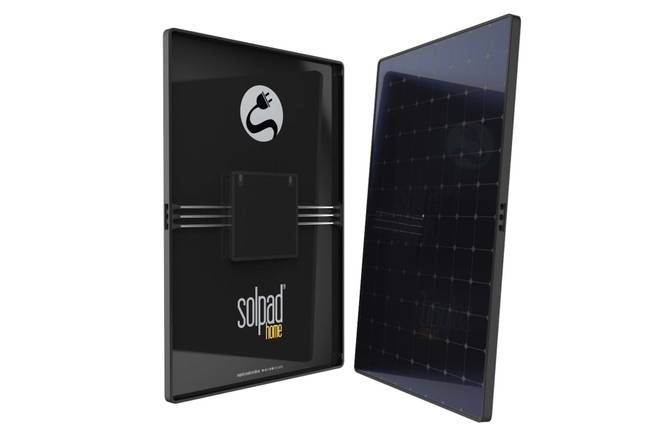

Home solar has the potential to reduce, and even eliminate, electricity costs for many people, but even with the rapid advancements we’re seeing in solar technology, there are still weak points that can be addressed and overcome, such as energy storage and ‘smart’ home integration. But a newcomer to the residential solar scene believes it has the answer, in the form of a standalone solar and battery unit which can be used singly or connected in an array, and which may be able to lower the overall costs considerably.
SunCulture’s SolPad solar device integrates solid state batteries directly into the solar panels themselves, offering its users the ability to not only generate their own clean electricity, but to also store if for use after dark or during peak demand times, when electricity costs are higher. The SolPad units also incorporate an inverter, which converts the electricity from the DC generated and stored by the device to the AC required by most household appliances, and includes “intelligent software” that communicates with both the users and with their home’s systems, allowing for granular control over which rooms or devices will receive the solar power.
“SolPad revolutionizes personal energy by bringing together the sustainable smart home, solar and energy storage into a simple, gorgeous and integrated device. SolPad also makes solar even more accessible for the majority of the global population and its growing energy needs, without the cost of building expensive grid infrastructure. With our groundbreaking component miniaturization and integration, we’ve transformed solar—much like the smartphone revolutionized the personal computer sector— combining numerous components into a single device that’s significantly less expensive, more powerful, and easier to use than conventional systems.” – Christopher Estes, SolPad’s CEO and Chief Product Architect
The SolPad can be used as a single unit, which could be placed on a patio or deck and used only when needed, or can be strung together into a more powerful array, which may allow more people to start going solar by purchasing one unit and then adding more over time (as opposed to having to purchase an entire array at once). And with the integration of energy storage and software directly in the units, the SolPads can function as a solar microgrid during power outages, which is something that most current solar arrays can’t do, due to their automatic disconnection feature (to protect utility workers from electricity flowing from panels onto the grid during outages).
“SolPad’s flexgrid inverter can automatically detect when to charge from the sun or charge from the local utility grid, adjusting for cloudy or rainy days, as well as changing local electricity rates. During the most expensive daytime hours, SolPad Home will switch to stored battery power, then switch back to grid power when rates are low. Flexgrid will also detect when there’s a power outage or blackout and safely disconnect itself from the grid. Once off the grid, SolPad automatically forms a personal solar micro-grid that will keep delivering power to specific lights and appliances. The SolPad Home Connect™ system is the most innovative power delivery interface to get power from your roof into your home. Connect is a wire-free system that links two or more SolPad Home panels together on your roof, completely eliminating the need for any complicated cabling or wiring, simplifying the installation and greatly reducing cost and installation time.” – SolPad
Two versions of the device will be sold, a ‘mobile’ SolPad that can be deployed as needed at home or on off-grid adventures, and the SolPad Home, which is intended for more permanent installations at home. The company says it will be bringing the SolPad to market during the second half of 2017, and while final pricing has yet to be announced, Fortune claims that SunCulture estimates that a whole-home system could cost close to $20,000, which is about half of that of a currently available comparable solar array with battery storage.
[Source:-Treehugger]
